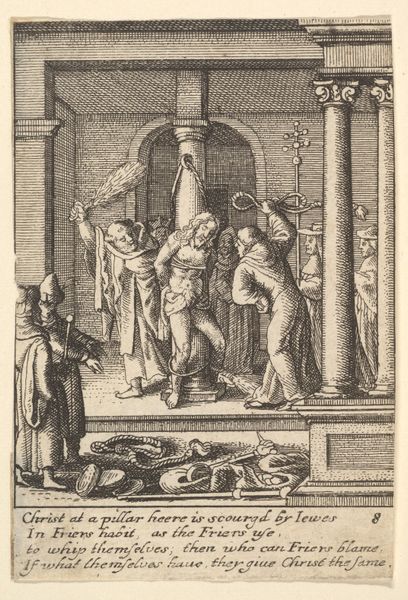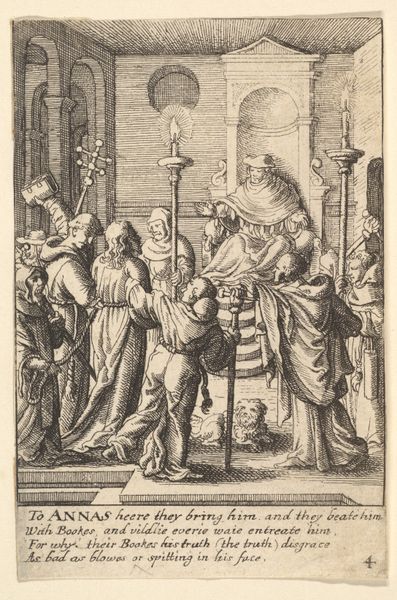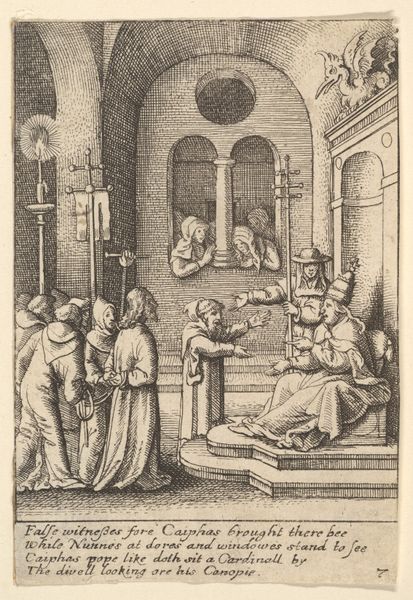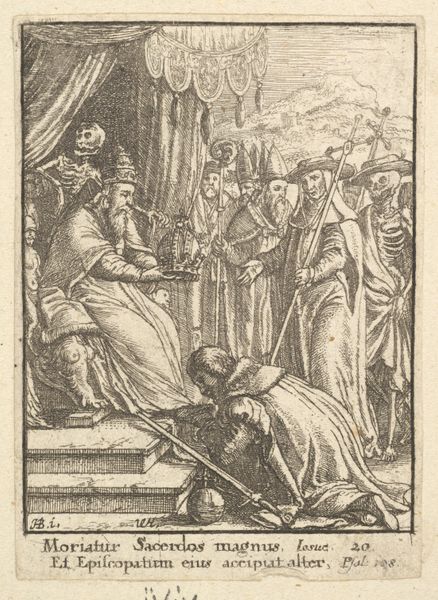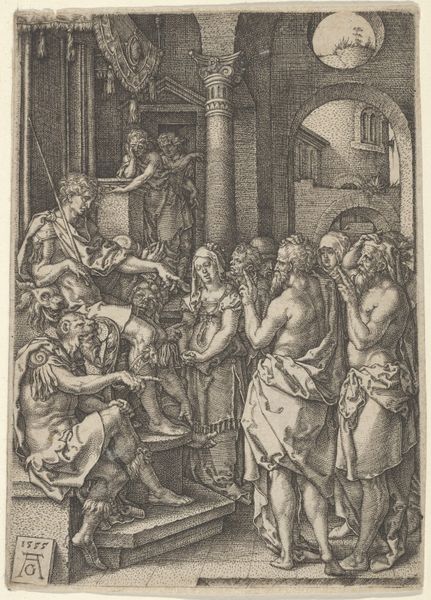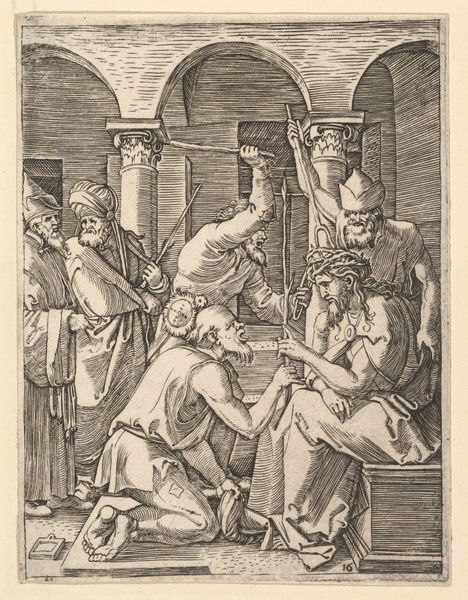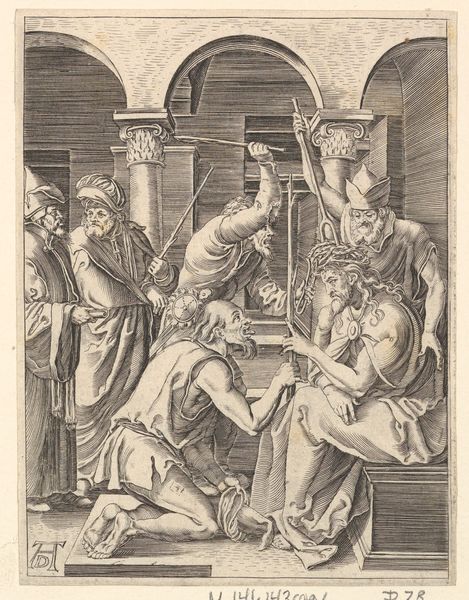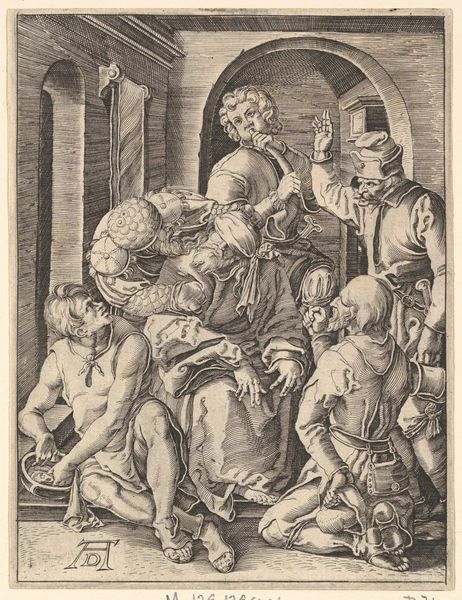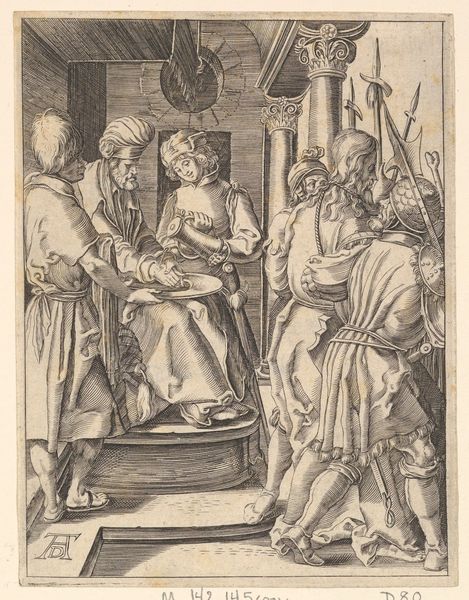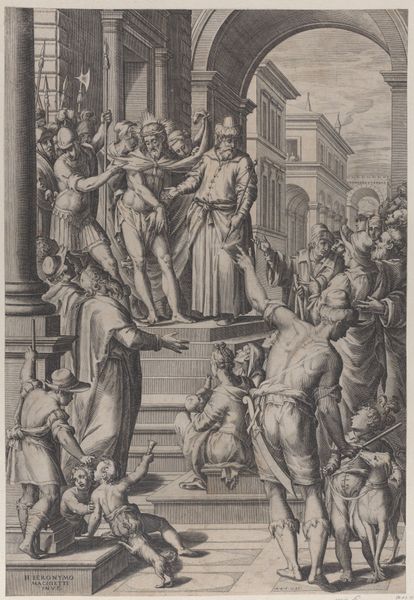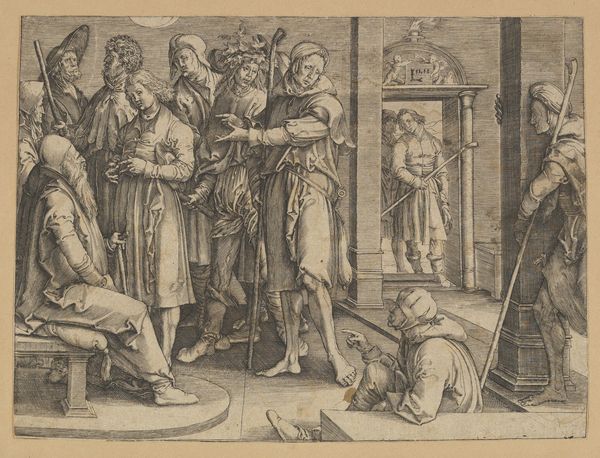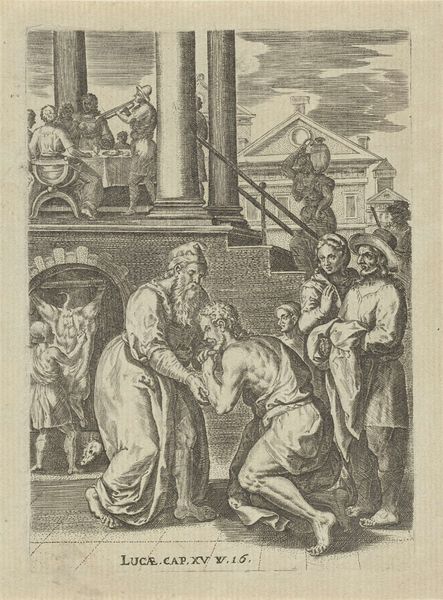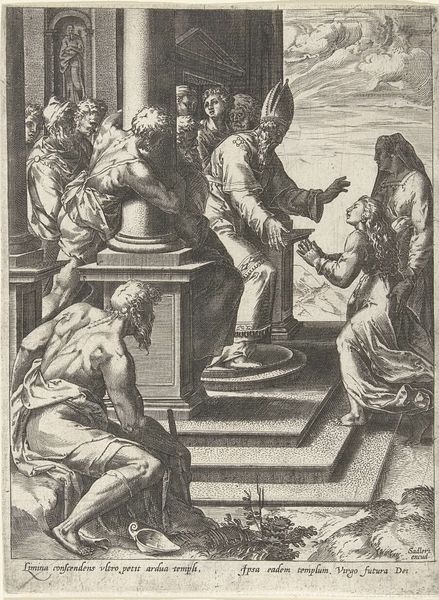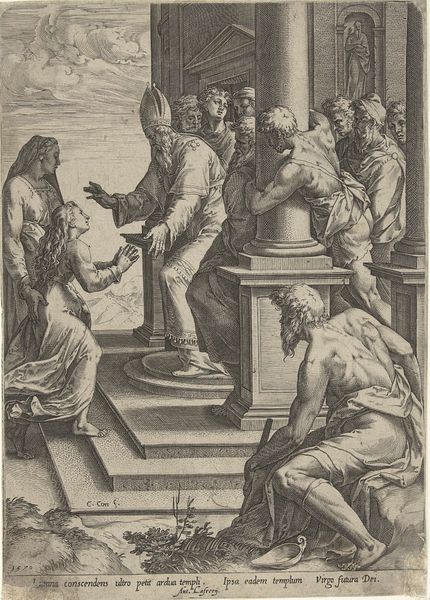
drawing, print, etching
#
drawing
# print
#
etching
#
mannerism
#
history-painting
Dimensions: Sheet: 3 1/2 × 2 5/16 in. (8.9 × 5.9 cm)
Copyright: Public Domain
Wenceslaus Hollar etched "The Washing of Hands" in the 17th century, capturing a scene laden with symbolic weight. The act of washing hands, ostensibly a gesture of purification, is here twisted into a symbol of moral evasion, echoing Pontius Pilate's infamous attempt to absolve himself of responsibility in the condemnation of Christ. This motif of absolution through cleansing is a recurring theme throughout history. We see it echoed in ancient rituals of purification and atonement, where water is used to symbolically wash away sins or transgressions. Yet, here, it's a perversion of that ideal. Pilate's washing becomes a theatrical performance, a shallow attempt to cleanse his conscience while condemning an innocent man. The psychological weight of this gesture is immense. It speaks to our capacity for self-deception and the human tendency to rationalize our actions, no matter how morally reprehensible. The act of washing becomes a mask, concealing the stain of guilt beneath a veneer of innocence. The cyclical nature of history is reflected in the way this symbol resurfaces, adapted, and reinterpreted across centuries, revealing the timeless capacity for humanity to absolve themselves of responsibility.
Comments
No comments
Be the first to comment and join the conversation on the ultimate creative platform.
